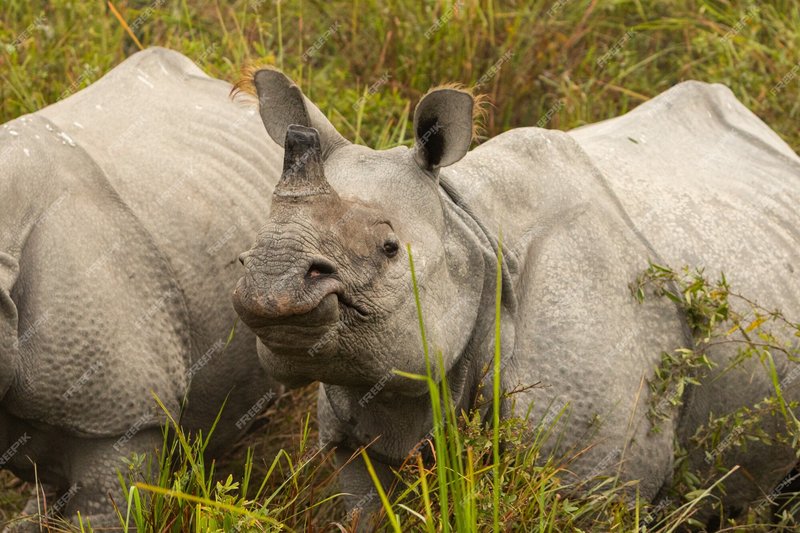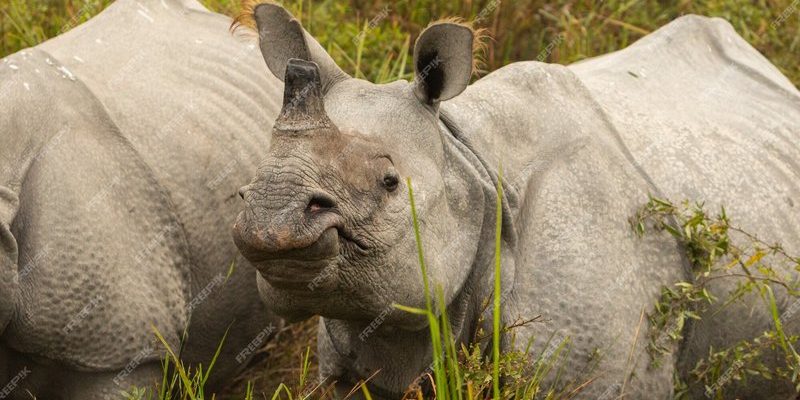
So, is the Indian rhinoceros truly endangered? Here’s the thing—its status is a bit of a rollercoaster. Efforts to protect this magnificent animal have been both encouraging and challenging. In this article, we’ll dive into the details of the Indian rhinoceros’s conservation status, the efforts being made to save it, and what the future might hold for this fascinating species.
Understanding the Indian Rhinoceros
The Indian rhinoceros, known scientifically as *Rhinoceros unicornis*, is a unique creature with quite the history! Unlike its African cousins, the Indian rhino has a single horn, which can grow up to 25 inches long. Imagine trying to balance a piano on your head! This horn, while impressive, is also a target for poachers who mistakenly believe it holds magical properties.
These rhinos are typically found in the grasslands of northeastern India and parts of Nepal. They thrive in thick vegetation and near water bodies. If you’ve ever seen a rhino in a river, you know how incredible their aquatic skills can be! Their population once plummeted to about 200 individuals due to poaching and habitat loss. Thankfully, thanks to dedicated conservation efforts, it’s estimated that around 3,700 individuals now roam the wild.
However, their numbers are still concerning. With continuous threats from poaching and habitat destruction, the question remains: can we sustain this population and help it grow?
Current Conservation Status
The Indian rhinoceros is listed as vulnerable on the International Union for Conservation of Nature (IUCN) Red List. This status indicates that, while the species isn’t critically endangered yet, it’s at risk of becoming extinct if current threats aren’t addressed. You might be wondering why this matters. It’s simple: every species plays a vital role in its ecosystem. Rhinos help maintain the grasslands by grazing, which allows other plants and animals to flourish.
Rhinos are also incredibly important for local economies, especially in regions dependent on tourism. Wildlife enthusiasts flock to see them, and that brings revenue to local communities. So protecting them isn’t just about saving animals; it’s about preserving ecosystems and supporting livelihoods too.
Threats Faced by the Indian Rhinoceros
Despite conservation successes, the Indian rhinoceros continues to face significant threats. Here are some of the most pressing ones:
- Poaching: The demand for rhino horns, particularly in some Asian countries, has led to illegal hunting. This is one of the biggest threats to their survival.
- Habitat Loss: As human populations grow, land for agriculture and development encroaches on rhino habitats. Less space means less chance for them to thrive.
- Climate Change: Shifts in climate can alter their habitat. Rhinos depend on specific ecosystems, and changes can affect food sources and water availability.
Understanding these threats is crucial. The more we know about what these magnificent creatures face, the better equipped we are to help them.
Conservation Efforts: What’s Being Done?
Conservationists and organizations around the world have stepped up to protect the Indian rhinoceros. Programs include anti-poaching patrols, habitat restoration, and community involvement. Here are some notable efforts:
- Protected Areas: National parks like Kaziranga in Assam are critical for rhino populations. They offer safe environments where rhinos can thrive away from poachers.
- Anti-Poaching Measures: Increased patrols and surveillance in key areas help deter poachers. Technology, like drones, is being used to monitor populations.
- Local Community Engagement: Involving local communities in conservation can change perspectives. When people see benefits—like eco-tourism—they’re more likely to protect rhinos.
Conservation success isn’t just about numbers; it’s about ensuring future generations can experience the wonder of these incredible animals.
The Role of Technology in Conservation
Technology is playing a substantial role in rhino conservation. Imagine having eyes in the sky or data in your pocket to track and protect these creatures. Here are some ways technology is being leveraged:
- Tracking Devices: GPS collars help scientists monitor rhino movements, which provides valuable data on their behavior and habitat use.
- Camera Traps: These are set up to capture images of rhinos in their natural habitat. Data collected helps with population estimations and monitoring their health.
- Drones: Drones are used to survey vast areas of land. They can identify poaching activities or track rhino movements without disturbing their habitat.
This blend of innovation and nature helps in shaping a better future for the Indian rhinoceros.
What Can You Do to Help?
You might be wondering, “How can I make a difference?” Believe it or not, even small actions can have a significant impact. Here’s how you can contribute:
- Support Conservation Organizations: Donating to reputable wildlife organizations can help fund anti-poaching efforts and habitat protection.
- Spread Awareness: Sharing information about the plight of the Indian rhinoceros can encourage others to get involved.
- Responsible Tourism: If you visit areas where rhinos live, choose eco-friendly tours that support conservation.
Every bit counts! When people come together for a common cause, incredible things can happen.
Looking Ahead: The Future of the Indian Rhinoceros
The future of the Indian rhinoceros is filled with both hope and uncertainty. On one hand, conservation efforts are making a difference, and populations are starting to grow. On the other hand, constant vigilance is required to protect them against ongoing threats.
Investing in education and community outreach is essential. When people understand the importance of preserving the Indian rhino, they become advocates for their survival. It’s like planting a seed of awareness.
In conclusion, the Indian rhinoceros is not just an animal; it’s a symbol of what we can achieve when we work together. Protecting this species is not just about saving a single horned giant; it’s about preserving an intricate part of our global ecosystem. As we move forward, let’s continue to support conservation efforts and strive for a world where the Indian rhinoceros can roam freely, just as it has for thousands of years.

